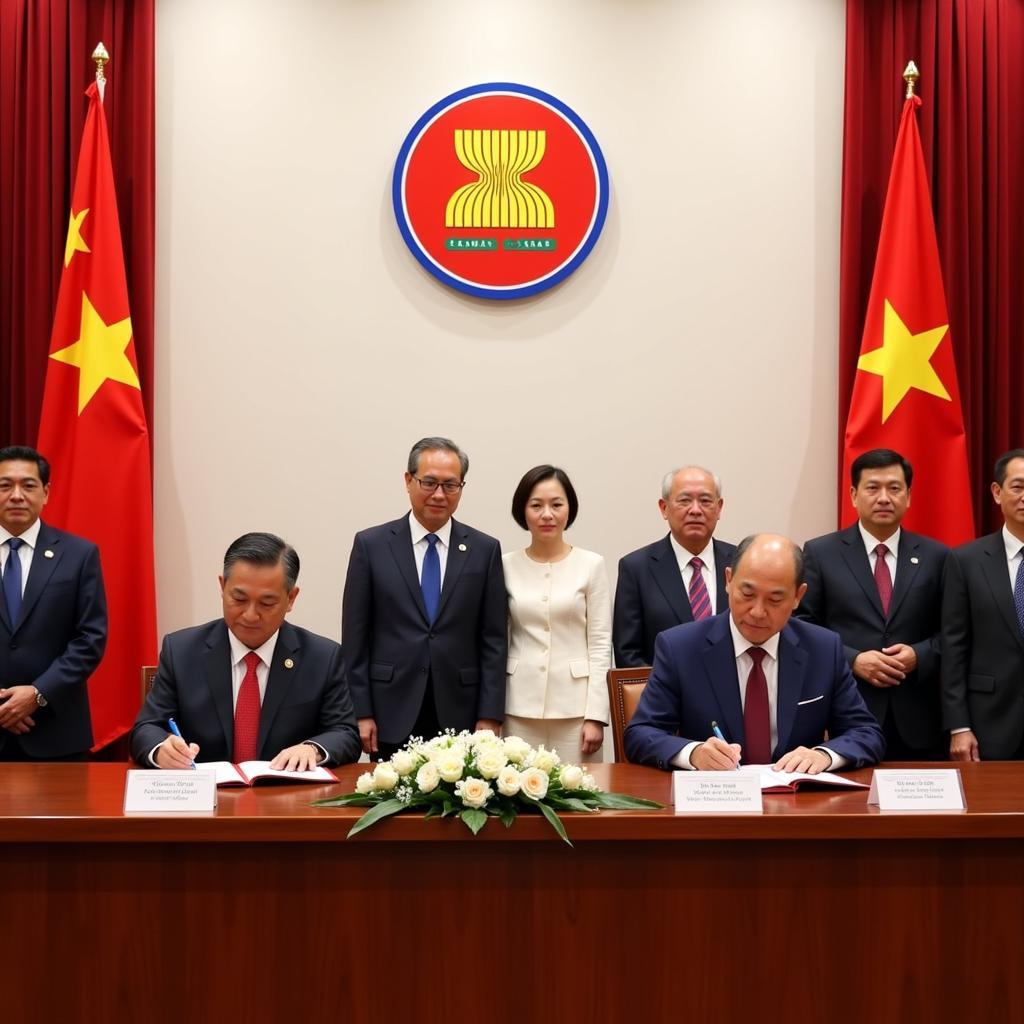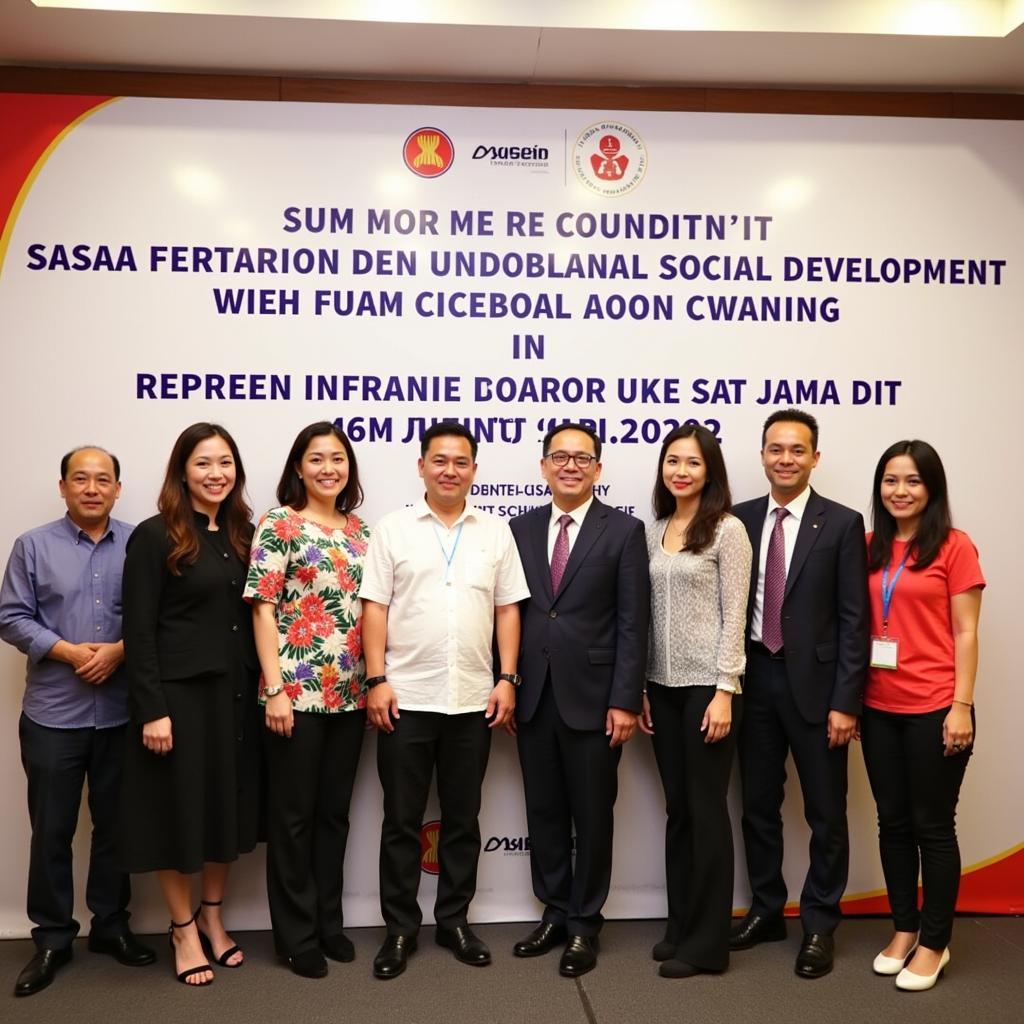The 6th Asean Summit, held in Hanoi, Vietnam in 1998, marked a significant turning point in the journey of the Association of Southeast Asian Nations. This summit, taking place amidst the backdrop of the Asian financial crisis, saw ASEAN leaders reaffirm their commitment to regional cooperation and integration. The summit played a crucial role in charting a course for ASEAN to navigate the turbulent economic waters and emerge stronger as a regional bloc. The leaders acknowledged the need for collective action and greater economic integration to mitigate the impact of the crisis and ensure sustainable growth. Read more about the recent 36th ASEAN Summit 2020.
Navigating the Asian Financial Crisis: A Collective Response
The 6th ASEAN Summit took place during a period of significant economic upheaval. The Asian financial crisis, which began in 1997, had sent shockwaves throughout the region, exposing vulnerabilities in national economies and highlighting the interconnectedness of ASEAN member states. The summit provided a platform for leaders to discuss the crisis, its implications for the region, and formulate a coordinated response. This collective approach aimed to restore investor confidence, stabilize financial markets, and promote economic recovery. The Hanoi Plan of Action, adopted at the summit, emphasized the importance of strengthening intra-ASEAN cooperation in various sectors, including finance, trade, and investment.
The Hanoi Plan of Action: A Blueprint for Regional Cooperation
The Hanoi Plan of Action served as a roadmap for ASEAN’s development in the years following the 6th ASEAN Summit. It outlined key priorities and initiatives to enhance regional cooperation and integration. The plan addressed a wide range of issues, from economic cooperation to social development and environmental protection. It also underscored the importance of promoting peace and stability in the region. The 6th ASEAN Summit, through the Hanoi Plan of Action, laid the foundation for future ASEAN initiatives and reinforced the organization’s role as a driving force for regional cooperation.
 6th ASEAN Summit Hanoi Plan of Action Signing Ceremony
6th ASEAN Summit Hanoi Plan of Action Signing Ceremony
Strengthening Economic Cooperation: A Key Priority
A central theme of the 6th ASEAN Summit was the need to strengthen economic cooperation among member states. The Asian financial crisis had demonstrated the vulnerability of individual economies to external shocks and the importance of regional solidarity. The summit emphasized the need for greater integration of ASEAN economies, promoting trade liberalization, and facilitating cross-border investment. These efforts aimed to create a more resilient and integrated regional economy capable of withstanding future crises. You can learn more about another important summit by exploring the 36th ASEAN Summit 2020 venue.
Promoting Intra-ASEAN Trade and Investment
The 6th ASEAN Summit recognized the importance of promoting intra-ASEAN trade and investment as a means of stimulating economic growth and enhancing regional integration. Several initiatives were launched to reduce trade barriers, streamline customs procedures, and create a more conducive environment for cross-border investment. These measures aimed to foster greater economic interdependence among ASEAN member states and create a more dynamic and competitive regional market. The summit also emphasized the need to attract foreign direct investment into the region to support economic recovery and development. Find out more about the theme of an earlier summit: the 26th ASEAN Summit Theme.
 ASEAN Leaders Discussing Economic Cooperation at the 6th ASEAN Summit
ASEAN Leaders Discussing Economic Cooperation at the 6th ASEAN Summit
Beyond Economics: Social Development and Environmental Protection
While economic issues dominated the agenda of the 6th ASEAN Summit, the leaders also addressed other important areas, such as social development and environmental protection. The Hanoi Plan of Action included provisions for promoting human resource development, improving education and healthcare, and addressing social inequalities. The summit also acknowledged the importance of environmental sustainability and the need for regional cooperation to address environmental challenges. What happened at the 36th ASEAN summit?
Building a People-Centered ASEAN
The 6th ASEAN Summit reaffirmed the vision of building a people-centered ASEAN, where the benefits of regional integration are shared by all. This commitment reflected a growing awareness of the importance of social development as a key pillar of ASEAN’s progress. The summit emphasized the need to invest in human capital, empower marginalized communities, and promote social inclusion. These efforts aimed to create a more equitable and prosperous ASEAN community. Another significant event was the 16th ASEAN India summit 2019.
 6th ASEAN Summit Social Development Initiative Launch
6th ASEAN Summit Social Development Initiative Launch
Conclusion: The 6th ASEAN Summit – A Legacy of Resilience and Cooperation
The 6th ASEAN Summit proved to be a defining moment in the history of ASEAN. It demonstrated the organization’s resilience in the face of adversity and its ability to unite in a time of crisis. The summit laid the groundwork for greater regional cooperation and integration, paving the way for a stronger and more prosperous ASEAN. The Hanoi Plan of Action, adopted at the summit, served as a blueprint for future ASEAN initiatives and solidified the organization’s commitment to building a more integrated and resilient Southeast Asia.
FAQ
-
Where was the 6th ASEAN Summit held?
- Hanoi, Vietnam.
-
What was the main focus of the 6th ASEAN Summit?
- Addressing the Asian financial crisis and promoting regional cooperation.
-
What is the Hanoi Plan of Action?
- A roadmap for ASEAN’s development adopted at the 6th ASEAN Summit.
-
What were some key outcomes of the 6th ASEAN Summit?
- Strengthened economic cooperation, social development initiatives, and environmental protection measures.
-
How did the 6th ASEAN Summit contribute to ASEAN’s growth?
- It fostered greater regional integration and resilience in the face of economic challenges.
-
What was the significance of the Asian Financial Crisis for the summit?
- It highlighted the need for greater regional cooperation and economic integration.
- How did the summit address social development?
- By promoting human resource development, improving education and healthcare, and addressing social inequalities.
Need Further Assistance?
For any queries regarding ASEAN or if you require support related to Southeast Asia’s media landscape, please do not hesitate to contact us.
Call: 0369020373
Email: [email protected]
Address: Thon Ngoc Lien, Hiep Hoa, Bac Giang, Vietnam.
Our customer support team is available 24/7 to assist you.


